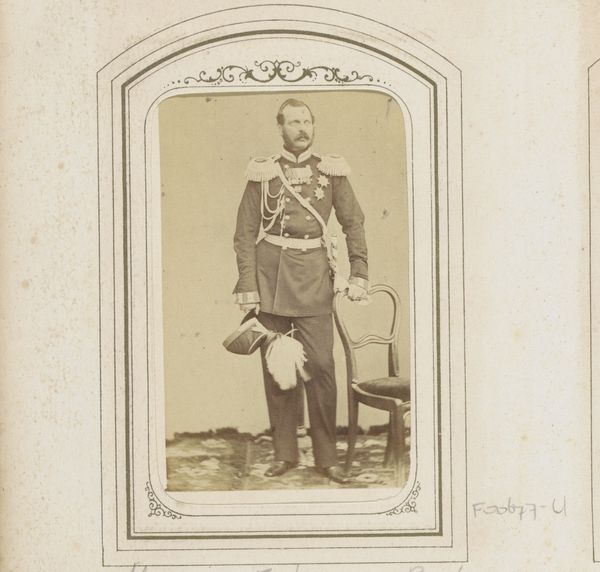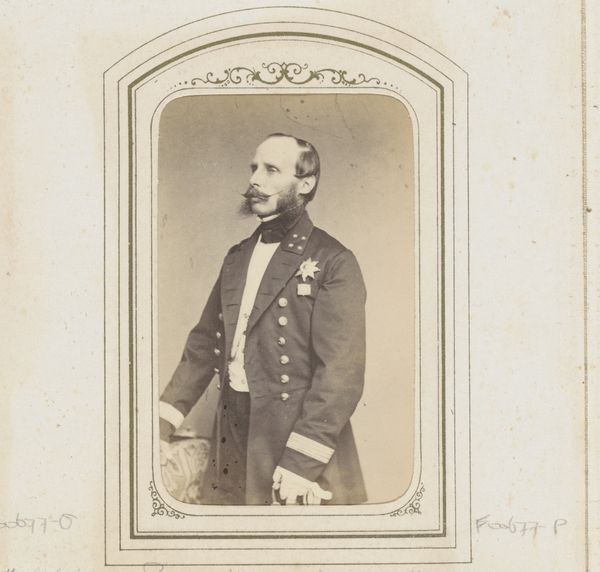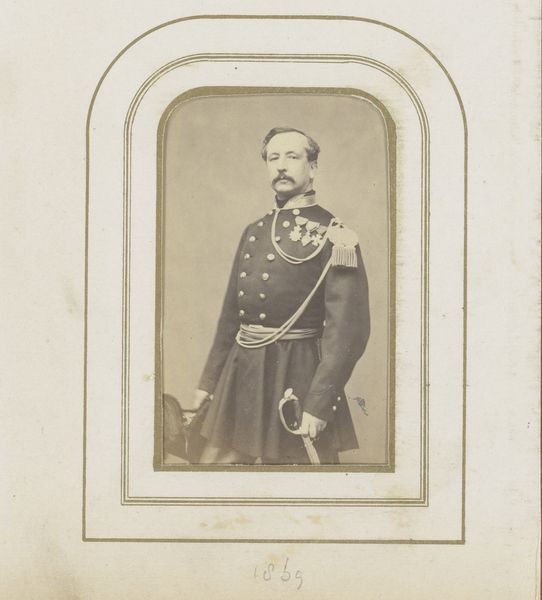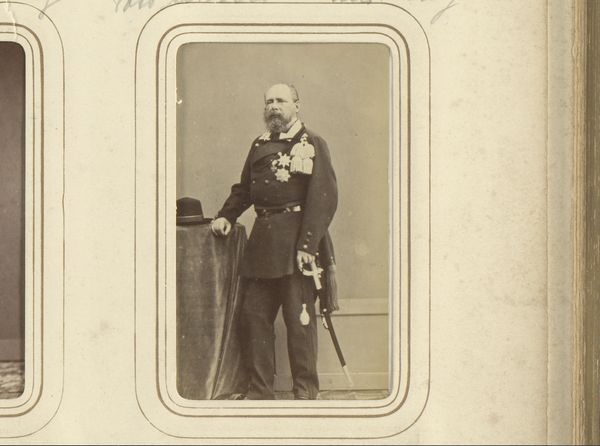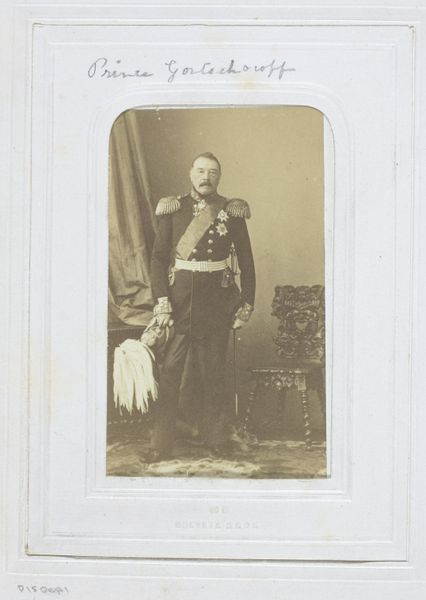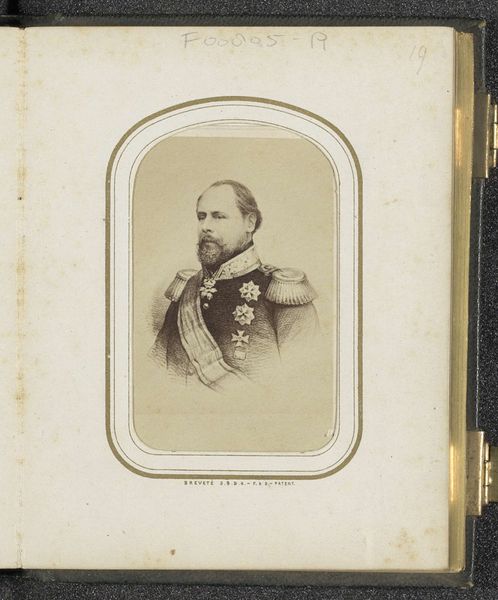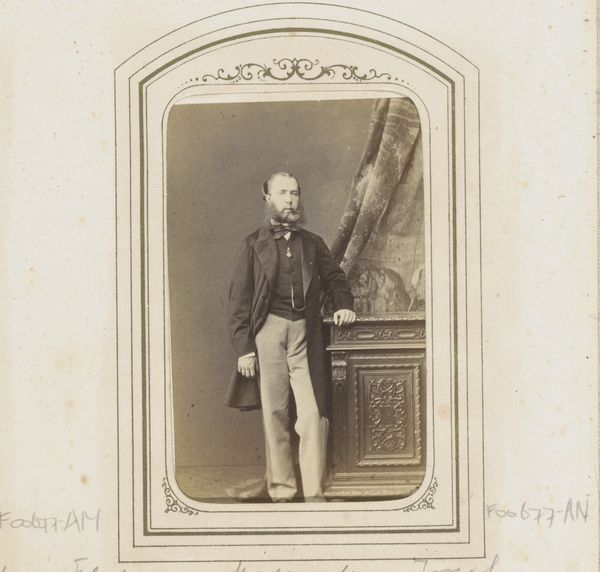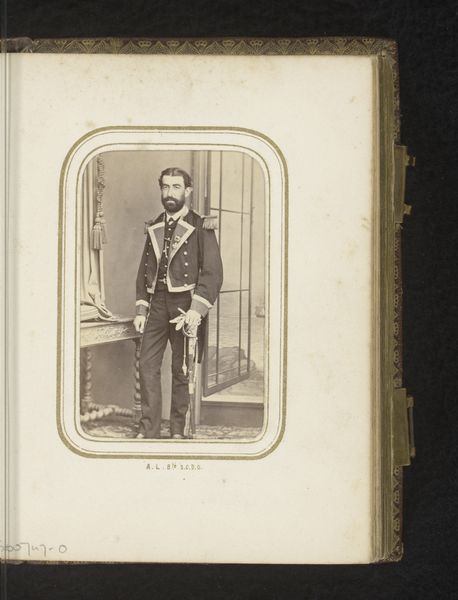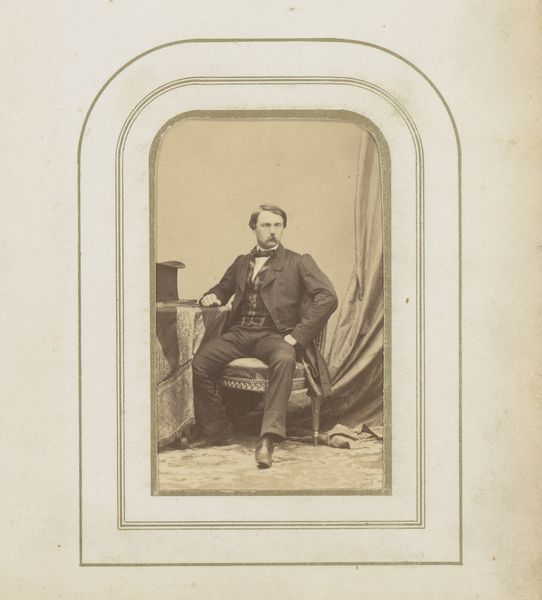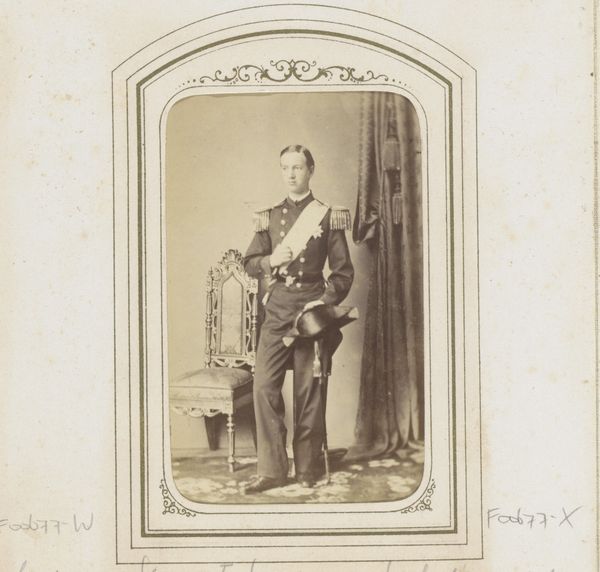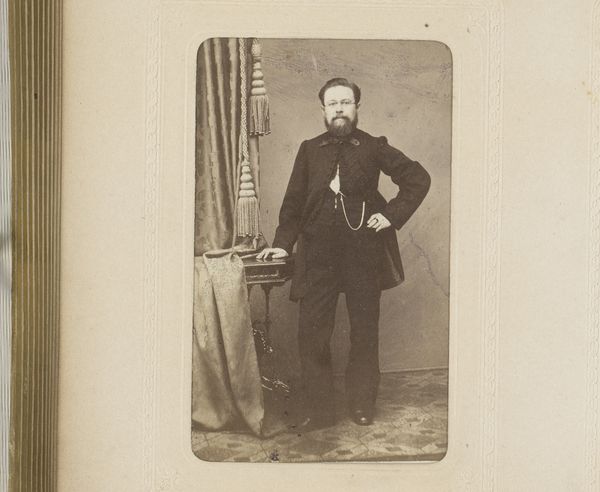
Dimensions: height 85 mm, width 53 mm
Copyright: Rijks Museum: Open Domain
Curator: Here we have a photograph attributed to the Ghémar Frères, entitled "Portret van Leopold II, koning van België," dating from about 1855 to 1870. It's currently held here at the Rijksmuseum. Editor: Immediately, the formality strikes me. There’s an undeniable aura of imperial control communicated by that very erect posture, even leaning slightly on the chair. Curator: Absolutely. And notice the toning of the paper—the yellowed quality, along with the slight imperfections, speaks to the very nature of the photographic print itself and the specific processes of the time. This isn't just a representation, it's an object with a history of its own. The paper and the chemicals used to create it have all aged in particular ways. Editor: It's almost as if time itself is a medium alongside the photographic emulsion. Looking at Leopold's attire, the sash, the medals—they’re more than just decorations, aren't they? They act as symbolic anchors, immediately rooting him in a lineage of power and a system of statecraft. Those specific forms carry considerable cultural weight and meaning. Curator: Yes, exactly. And it’s relevant that we're looking at a photograph rather than a painting, for example. This was an era where photography, while rapidly developing, was also being used to solidify power structures through readily disseminated images of rulers and officials. The materials would be carefully sourced, crafted, and endlessly reproduced to affirm Belgian hegemony. Editor: Thinking of those "readily disseminated images", the crown on his hat, combined with his steady gaze… those symbols convey not just authority but an implied, unwavering watchfulness. The image functions to establish that ever-present royal eye. Curator: It does. The texture and materiality of this piece reflect a very specific moment in history when image production became industrial, serving very particular social ends. This convergence—the production of the image and the man portrayed—became central to the projection of authority in the 19th century. Editor: Indeed, analyzing these components makes one appreciate the depth embedded within this photograph beyond mere portraiture. The visual language of power truly speaks volumes. Curator: Looking at it with fresh eyes, thinking about the layers of intention and materials that constitute it is something that brings forth the significance. Editor: And understanding the language that it uses to create meaning connects this work to wider patterns of representation that continue even to this day.
Comments
No comments
Be the first to comment and join the conversation on the ultimate creative platform.
